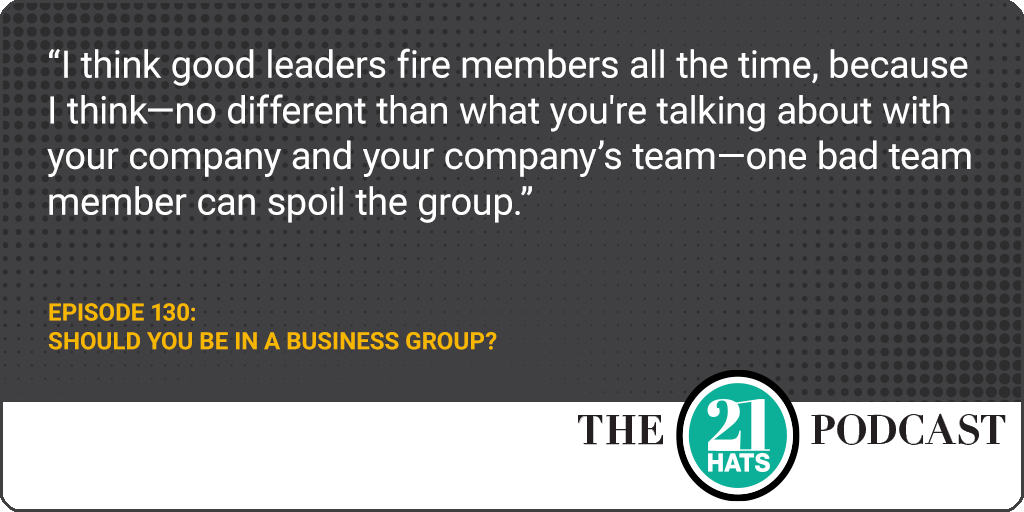The Pay-Transparency Era Has Arrived
New York City’s new law has already opened a trove of salary data to job candidates, colleagues, and competitors.
Good morning!
Here are today’s highlights:
Does a funeral home belong on TikTok?
Americans are still quitting jobs at near-record rates.
Things haven’t gotten any easier for small restaurants.
Retailers are trying to move away from free returns.
MARKETING
Here’s how a Houston funeral home uses TikTok: “All Peoples' Funeral Home attracts millions of viewers on its TikTok page, all captivated with its tutorials, behind the scenes clips on the work that goes into preparing for a service, celebration of life proceedings, and the overall elegance and professionalism of Deborah Ali-Williams, who is the president, funeral director, and the star of the videos. In some videos, Ali-Williams talks directly to viewers and others she's simply walking around. ‘It's crazy. They love my shoes, the way I dress, the way I speak,’ she said. ‘I’m still in the mode of what I’ve always done. It’s just being seen.’”
“The first post came in May 2021 in the form of a commercial highlighting a drive-through funeral visitation as a pandemic-friendly alternative. The post went viral, with more than 600,000 views and within a week, the account had gained 10,000 followers, [according to her son Syed Ali].”
“‘I think that there are multiple perceptions that funeral homes only want to take your money and give you the bare minimum, or (there's) a lot of death so it’s gloomy or it smells bad,’ he said. ‘But seeing a beautiful lady that's upbeat challenges that negative view.’”
“All Peoples' Funeral Home offers deals ranging from $5,000 to $13,000. Packages typically include the viewing, burial, service fees, transport, casket, embalming, repass service and catering, but guests can also add on features such as a horse and carriage, a crowning service for their loved one, and a police escort.” READ MORE
HUMAN RESOURCES
New York City’s pay transparency law is already having an impact: “The result is a trove of updated job listings at some of the nation’s most prominent employers, providing job seekers, existing employees and the merely curious with a rare glimpse at the pay practices of major companies. Some employers, like Amazon.com, have dozens of jobs with maximum pay of more than $200,000, according to listings. An opening for principal product manager in the company’s Amazon Music division lists a base salary of $197,900 to $267,800 a year in New York. A head of leadership and organizational development can make a salary of as much as $321,700.”
“Though the law requires employers to post ‘good-faith’ ranges, what that means in reality is up to some interpretation, executives say.”
“Among the listings posted so far, lower-level jobs tend to have fairly narrow ranges. By contrast, some companies list salaries for senior positions that vary by more than $200,000.”
“An assistant vice president position involving machine learning platforms at CVS Health, for example, has a posted range of $189,400 to $416,700.”
“Pay matters have become so complex that those who advise on it typically earn six-figure salaries, too, postings show. A position for a job architecture manager, advising clients on compensation strategies, at Deloitte has a posted salary range of $145,000 to $268,000.” READ MORE
Americans are still quitting jobs at near-record rates: “The overall quits rate—the percentage of the employed population that quit within a month—was 2.7 percent in September, the same as it was two months earlier. The quits rate for the private sector alone slowed down a hair, though, from 3 percent to 2.9 percent. These rates show both how many opportunities workers are seeing at other firms and how confident they feel about leaving their jobs. Those workers are then rewarded for switching jobs: Their wages increased by 7.1 percent on an annual basis, according to the Atlanta Wage Tracker. That’s higher than the 5.2 percent raise that people who stay in their jobs have gotten in the past year.” READ MORE
Here’s what happened to the original Great Resigners: “The Great Resignation neared its peak one year ago when more than 4.5 million Americans quit their jobs. Some left low-wage service positions for higher pay. Others set off for new careers or whole new lifestyles. In 2021, federal data show, nearly 50 million workers came to the same conclusion, and that trend continued through this September, when 4.1 million workers quit. People changed their jobs, their cities, and their lives, ushering in one of the greatest reshufflings in the history of the U.S. labor force. And yet 40 percent of workers are thinking about leaving their jobs within the next six months, a recent global survey found.”
“Eight Americans who quit jobs last year shared their stories with The Washington Post. They spoke about liberation and autonomy, of self-sacrifice and caretaking, and of their bounty of house cats.”
“[Brian Atkinson], the special education teacher turned urban lifestyle podcast and radio host, wants people to know quitting will not make your work life easier. ‘I’ve worked probably 10 to 100 times harder doing it for myself than I did as a teacher.’” READ MORE
PRICING
Food prices have been rising fast; corporate profits have risen even faster: “In mid-October, PepsiCo, whose prices for its drinks and chips were up 17 percent in the latest quarter from year-earlier levels, reported that its third-quarter profit grew more than 20 percent. Likewise, Coca-Cola reported profit up 14 percent from a year earlier, thanks in large part to price increases. Restaurants keep getting more expensive, too. Chipotle Mexican Grill, which said prices by the end of the year would be nearly 15 percent higher than a year earlier, reported $257.1 million in profit in the latest quarter, up nearly 26 percent from a year earlier.”
“So far, food companies and restaurants have been able to raise prices because the majority of consumers, while annoyed that the trip to the grocery store or drive-through for takeout costs more than it did a year ago, have been willing to pay.” READ MORE
Meanwhile, nearly half of small restaurants couldn’t pay their rent in October: “In September, 36 percent of restaurants couldn’t pay their rent, while in August and July, the number was 46 percent and 45 percent, respectively. New data from Alignable shows that rent delinquency among all small businesses jumped by 7 percent in October, with restaurants well above the national U.S. average of 37 percent of small business owners who couldn’t pay. Only the automotive and education sectors fared worse than restaurants on the month.”
“At 49 percent, the restaurant sector reached a new rent delinquency high in October. Alignable attributes the trend to a drop in traffic due to inflationary pressures hitting consumers.”
“The macroenvironment is also forcing higher rent prices for commercial properties, likely pressuring smaller businesses in favor of bigger, well-capitalized chains.” READ MORE
RETAIL
Companies are making it harder to return stuff: “Shoppers became accustomed to using their homes as dressing rooms during the pandemic, as retailers let them buy several items online and then decide what to keep. Stores are now trying sharp measures to curb that habit. Retailers bent over backward to make returns easy so that people would keep shopping through Covid-19 shutdowns, says Erin Halka, a retail strategist at supply-chain consulting firm Blue Yonder. But that fed a pattern of buying and returning that grew costly for companies. Now, as e-commerce remains healthy, retailers from Athleta to Zara are shortening refund and exchange windows and charging customers restocking fees.”
“Returns are especially challenging for stores that already have too much stuff. With returns piled to the ceilings and clogging warehouse aisles, businesses are working hard to dissuade their customers from bringing items back, says Thomas Borders, general manager at data and technology company Inmar Intelligence.”
“The items stores are already heavily discounting—apparel, home goods, and electronics, for example—are also the ones consumers will have the hardest time returning, Mr. Borders says. When a pair of pants is sold at an already discounted price, ‘there’s even less margin for them to play with if that item gets returned,’ Mr. Borders says.”
“In 2021, 18 percent of retailers didn’t offer free shipping on returns; this year, twice as many don’t offer free return shipping, according to a survey of 300 retailers conducted by Inmar Intelligence.”
“Nordstrom has invested in better imagery and product descriptions, he says, and Amazon has been taking steps to bundle electronics with the parts needed for installation so that buyers get all the cables and batteries they need to make a product work.”
“IKEA lets you see how a lamp looks in your living room and Warby Parker shows what frames fit your face shape. Snapchat offers a new augmented reality tool that lets you try on and purchase clothes—including Halloween costumes—directly within its app.” READ MORE
THE WAR IN UKRAINE
Posted by a Ukrainian entrepreneur:
THE ECONOMY
Inflation is not just an American problem: “Consumer prices in the 19 countries that use the euro as their currency rose at a record annual rate of 10.7 percent in October, the European Commission reported on Monday. In September, the rate was 9.9 percent. Twelve months ago, it was 4.1 percent. The relentless upward march sharpens the tough choices facing Europe’s elected leaders and central bankers. Reiterating its determination to halt the rise in prices, the European Central Bank last week announced it was raising interest rates by three-quarters of a percentage point for the second time in a row. Until September, the bank had not instituted such a big increase since 1999, in the very early days of the eurozone.”
“In the United States, consumer prices rose by 8.2 percent in the year through September. Britain’s inflation rate was 10.1 percent over the same period.” READ MORE
SPONSORSHIP OPPORTUNITIES
How’d you like to have your promo appear in a newsletter or on a podcast enjoyed by some of the most impressive and most engaged business owners in America? Want to learn more about 21 Hats sponsorship opportunities? Just reply to this email.
STARTUPS
A Massachusetts startup believes vaccines of the future will be skin patches: “Immunizations shipped to doorsteps around the globe is the dream of Michael Schrader, chief executive and cofounder of Vaxess. For more than a decade, the Cambridge startup — whose name is a portmanteau of ‘vaccine’ and ‘access’ — has inched toward the creation of a vaccine that’s easy to use, doesn’t require refrigeration, and releases slowly in the skin for a stronger immune response. On Wednesday, Vaxess announced that it raised $27 million in series B funding led by the Boston biotech investor RA Capital Management. The money helped the company finally begin the first clinical trial of its technology in August. Results from the 45-person study of a flu vaccine patch are expected by the end of the year.” READ MORE
THE 21 HATS PODCAST
Should You Be in a Business Group? This week, Sarah Segal, Jay Goltz, and special guest Leo Bottary have a hype-free conversation about why peer-advisory groups like Vistage, YPO, and EO can be life-changing for business owners and why they’re not for everyone. Sarah has been wondering if they’re for her. Jay, who’s been in six different peer groups, says it can be worth the price of admission just to see how other owners run their businesses—but there are reasons he keeps leaving the groups he joins. And Leo is a former Vistage employee who has written multiple books on peer groups and has built a related consulting practice. Surprisingly few business owners belong to a peer group. Are they missing out? All three guests suggest questions to consider before deciding for yourself.
You can subscribe to the 21 Hats Podcast wherever you get podcasts.
Thanks for reading, everyone. — Loren





